During the course of the disease in question, the proper shape and flexibility of the intervertebral discs are lost: their gradual deformation occurs. The distance between the vertebrae decreases, which causes pinched nerves and pain. Of all parts of the spine, the lumbosacral is most often susceptible to these pathological changes.
Causes and signs of lumbar osteochondrosis - how does the disease manifest itself?
The disease in question occurs due to improper distribution of the load on the spine. This is the main reason for diagnosing lumbar osteochondrosis. There are many factors that can cause the onset and development of this disease.
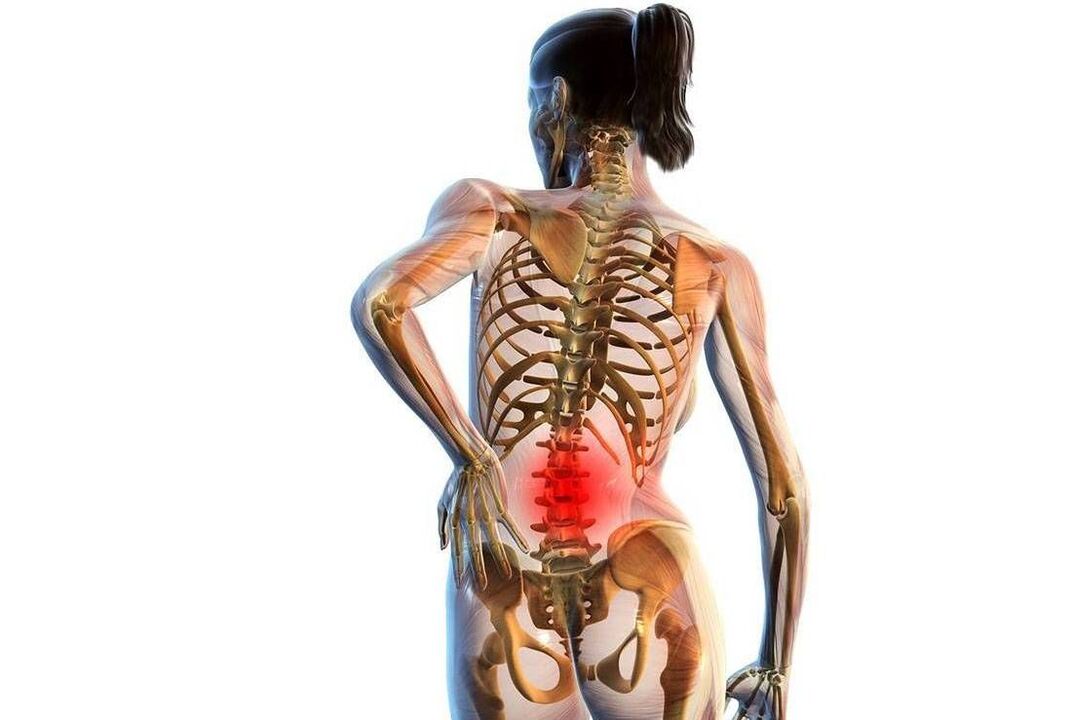
- Passive lifestyle. This includes people who lead a predominantly sedentary lifestyle. In a sitting position, the corset muscles relax, which increases the load on the lumbar spine.
- Inflammatory phenomena located in the joints of the spine.
- Errors in the functioning of the endocrine system, hormonal imbalance.
- Serious infectious diseases affecting bones and joints (tuberculosis, osteomyelitis).
- Dysfunctions of the gastrointestinal tract and heart.
- A lifestyle associated with heavy physical work (porters, weight lifters, construction workers).
- Irregular posture, inadequate walking.
- Low density of cartilaginous tissue (hereditary factor).
- Congenital pathologies associated with the structure of the spine/skeleton. Deviations in the functioning of the musculoskeletal system.
- Obesity.
- Unbalanced work and rest regime.
- Age. In people, after passing the 50-year mark, the intervertebral discs become less elastic and inactive.
- Chemical poisoning.
- Flat foot. With the correct structure of the foot, the load is absorbed while walking. If there is a flat foot, the intervertebral discs receive the maximum load, which leads to their deformation and destruction.
- Back injury.
Signs of the disease in question are divided into three groups. Reflex signs (pain). They have several manifestations:
- Lumbago. It occurs as a result of sudden movements (high jump, running, coughing). This pain is paroxysmal in nature (lumbago). During this attack, the patient bends the trunk forward and remains in this position for a certain time: attempts to straighten up provoke a new wave of pain. Lumbago occurs as a result of compressed nerve roots.
- Lumbodynia. The pain that occurs in the lower back is of an increasing nature. Initially, the patient feels a certain discomfort, which can progress to intense and regular pain. The cause of lumbodynia can be a sedentary lifestyle and excessive physical activity. Low back pain can develop against the background of low back pain.
- Sciatica. Pain sensations spread along the sciatic nerve. The main location is the lower extremities. This phenomenon occurs when the nerve roots of the spinal cord are pinched. If motor fibers are involved in the destructive process, the patient will experience muscle spasms and muscle weakness. Ignoring these symptoms can lead to muscle atrophy in the future.

Radicular syndrome. Characterized by the following manifestations:
- the skin on the legs periodically loses sensitivity;
- the patient complains of sharp pain in the lower back;
- interruptions occur in the sweat system.
Root-vascular signs. They occur against the background of compression of blood vessels. The following complaints are observed in the patient:
- heat/cold in the lower extremities;
- slight tingling/increasing pain in the feet;
- swelling (when the veins are compressed).
Lack of adequate treatment can cause a stroke, which can lead to partial/complete paralysis of the lower extremities, as well as serious dysfunction of the pelvic organs. Lumbar osteochondrosis negatively affects the structure of the vertebrae: over time, they can shift. This violation can provoke various negative phenomena.
- Dysfunctions in the functioning of internal organs and the genitourinary system.
- Frequent fatigue.
- Weakness.
- Irritability.
Symptoms of lumbosacral osteochondrosis depending on the degree - how is the disease diagnosed?
Based on the set and strength of manifestation of clinical signs, the disease in question is divided into several degrees. The first is initial, the second degree is mild, the third is severe.
1st degree lumbar osteochondrosis.
Characterized by the main symptoms:
- Lumbago (lumbago), which occurs due to a rupture in the disc capsule (intervertebral).
- Tissue swelling.
- Muscle spasm.
- Normal pain.
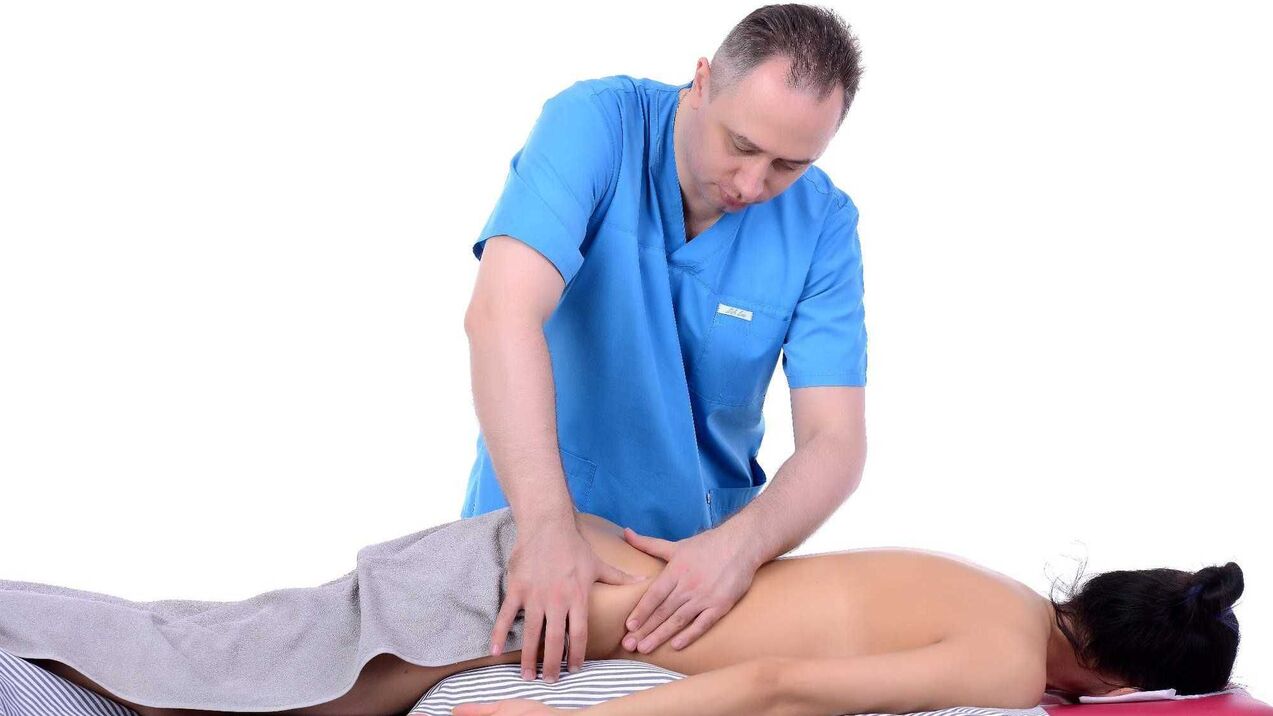
With grade 1 lumbar osteochondrosis, the patient may experience additional symptoms caused by compression of blood vessels and nerve roots.
- Imitation of disorders associated with the functioning of the kidneys and gastrointestinal tract.
- Periodic abdominal pain that occurs against the background of spasm of the abdominal muscles.
2nd degree lumbar osteochondrosis.
This degree of lumbar osteochondrosis is also characterized by the following manifestations:
- Regular pain (lombodynia). The location of the pain, which can vary in intensity, is in the lower back.
- Non-standard mobility in the spinal joints. A tight bandage on the lower back can briefly improve the patient's general condition and reduce pain.
- Malfunction (not always) of internal organs. In some cases, a patient with lumbar osteochondrosis may experience bronchial asthma and errors in the functioning of the biliary/urinary tract.
- Pain in the lower extremities that goes in the direction of the sciatic nerve.
3rd degree lumbar osteochondrosis.
At this stage of the disease, surgical treatment is necessary, otherwise paralysis and death may occur. The 3rd degree of lumbar osteochondrosis has peculiarities.
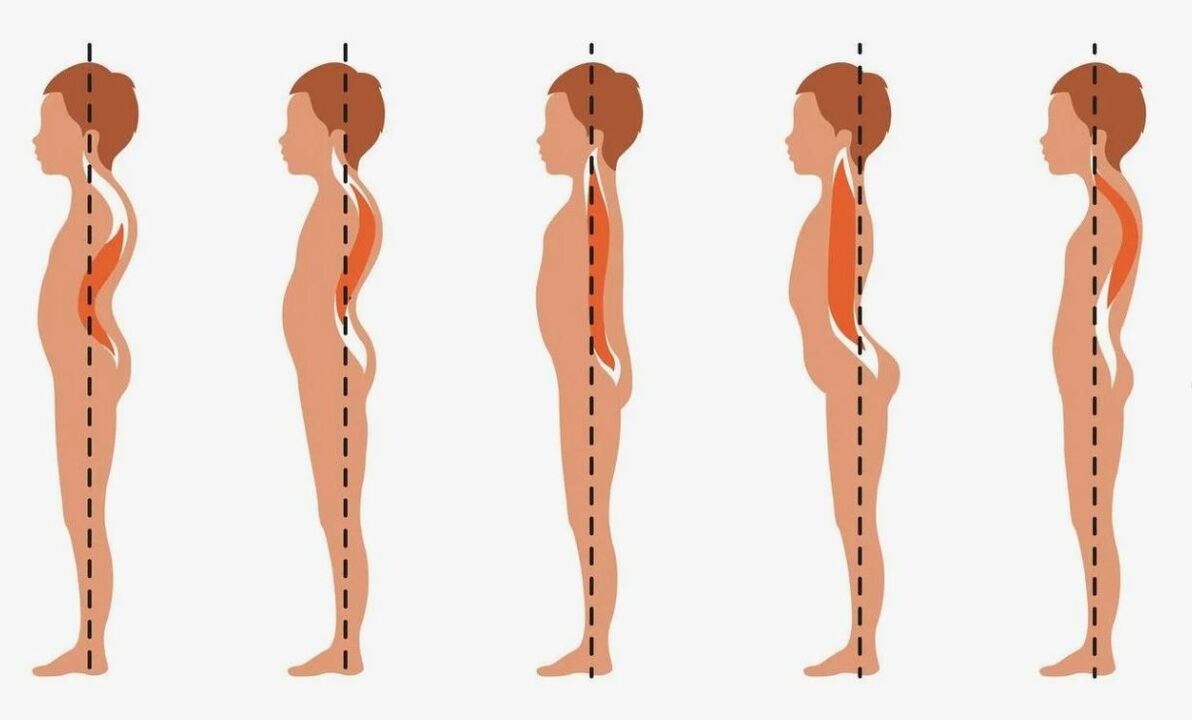
- Spinal deformities: right/left curvature (scoliosis); arching forward (lordosis), arching the lumbar spine (kyphosis).
- Constant, intense and sharp pain that is felt with the slightest physical activity (change of position, coughing, sneezing).
- Swelling of muscle tissue, ligaments.
- Periodic/regular lack of sensitivity in the lower part of the body (lower back, legs, feet).
- Dysfunctions of the genitourinary system.
Treatment methods for lumbar osteochondrosis
The choice of treatment tactics for the disease in question will depend on the degree of osteochondrosis, the presence of additional diseases, the general condition of the patient and other factors that will necessarily be taken into account by the attending physician.
There are 2 important points that guide any doctor when prescribing treatment.
- To eliminate osteochondrosis of the lower back, an integrated approach is needed.
- Treatment measures (intensity, duration) will be determined by the level of neglect of the pathology in question.
Drug treatment of lumbosacral osteochondrosis - effective medicines
Every year, scientists develop new drugs that help alleviate the symptoms of lumbar osteochondrosis. The list of medications provided below is not a standard; can change. However, today doctors often use certain medications to combat the manifestations of this disease.

- Chondroprotectors. They stop the destructive processes in the cartilaginous tissues of the spine that occur at the initial stage of the disease.
- Anti-inflammatory medications (non-steroidal). Used for the treatment of 2nd degree lumbosacral osteochondrosis. This group of medicines can be used in the form of injections (intramuscular), tablets, ointments, rectal suppositories, capsules and solutions. In case of exacerbation of the disease, the patient can receive injections (16 mg/day)
- Muscle relaxants. Help eliminate discomfort caused by increased muscle tone.
- Vasodilators. Helps improve blood circulation, preventing stagnation, minimizing the risk of infection in the body.
- Local anesthetics. In case of intense and constant pain, the anesthetist performs a block. A solution is injected into the painful area using a special needle. The pain goes away immediately and does not bother you for several weeks. Such blocking should be used only in extreme cases: it has many negative consequences.
- Vitamin and mineral complexes. Often prescribed for elderly patients in order to increase the strength of tendons and ligaments.
Massage for lumbar osteochondrosis of the lumbosacral region
This method of treatment will be useful in the subacute phase of the disease in question. Through massage it is possible to eliminate pain, get rid of tension and muscle hardening.
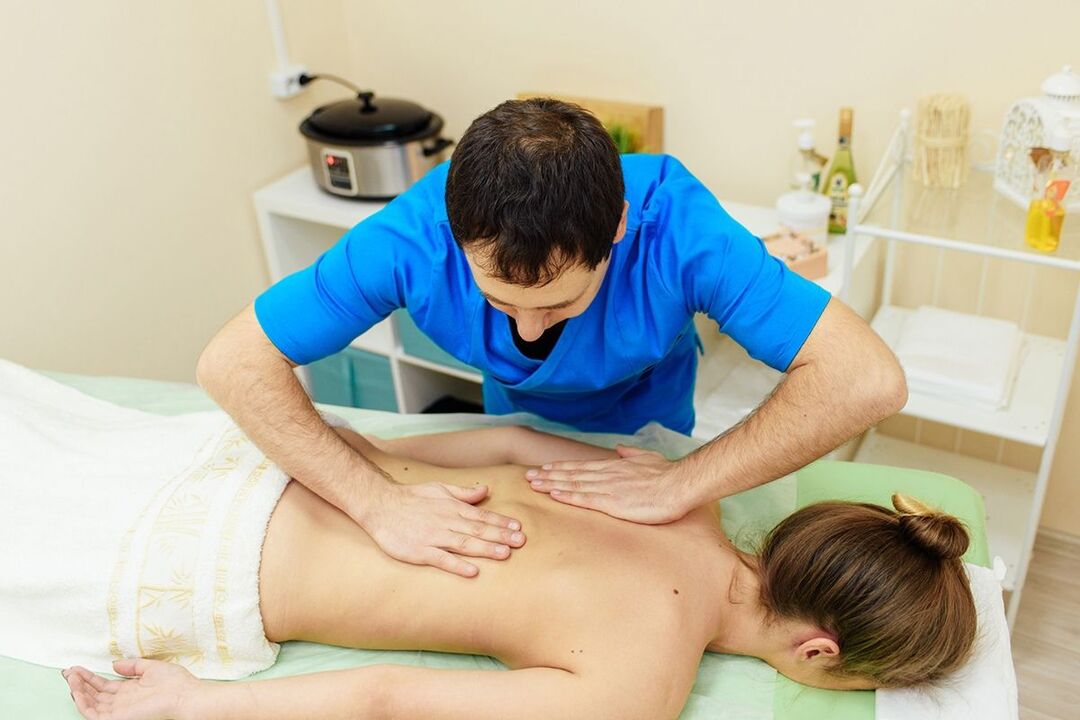
The massage should be performed on a healthy (not affected! ) area. During the procedure, the patient is positioned on a flat, hard table face down. Place a pillow/cushion under your belly. It is also necessary to ensure that the patient's legs are elevated (45 degrees). The forehead should rest on a hard surface.
To perform a massage, it is better to use special products (oils, creams, lotions) that have warming properties, or carry out the session immediately after thermal procedures (bath, sauna). Today there are many massage techniques, let's highlight the main ones:
- Stroking. There are several types of strokes: hook-shaped, transverse planes, fan-shaped, ending with symmetrical strokes in the region of the sternum muscles.
- Squeezing. Performed in combination with stroking. This massage technique ensures muscle stretching.
- Crumple.
- Shivering.
- Crunching. Often used to improve the function of tendons, ligaments and joints.
- Punctual impact. Not every massage therapist is capable of performing the procedure using the acupressure technique.
Therapeutic gymnastics or exercise therapy for lumbar osteochondrosis - a set of exercises for the lumbosacral spine on video.
The entire complex of physical exercises used in the diagnosis of lumbar osteochondrosis should help increase the mobility of the lower back.
Therapeutic gymnastics will have no effect if the exercises are performed occasionally. The basic principle of exercise therapy is regularity. Constantly performing a certain set of exercises will help eliminate destructive processes in the intervertebral joints. It is prohibited to carry out exercise therapy in the presence of acute pain. For severe pain, doctors recommend bed rest and wearing special corsets. When the pain subsides, you can try therapeutic exercises.
Physiotherapy for lumbar osteochondrosis
This conservative treatment method is one of the most effective. However, to achieve the desired result you need to spend a lot of time. Using several types of physical therapy at the same time helps speed recovery. This method of treatment has many contraindications that cannot be ignored. Physiotherapy is often prescribed for children, pregnant women, nursing mothers and elderly patients.
The use of physiotherapy is prohibited in the following cases:
- Cancer;
- acute stages of osteochondrosis;
- serious disturbances in the functioning of the central nervous system;
- injury to the area where physical therapy is to be performed.
Today, various physiotherapy procedures have become popular in the treatment of lumbar osteochondrosis.
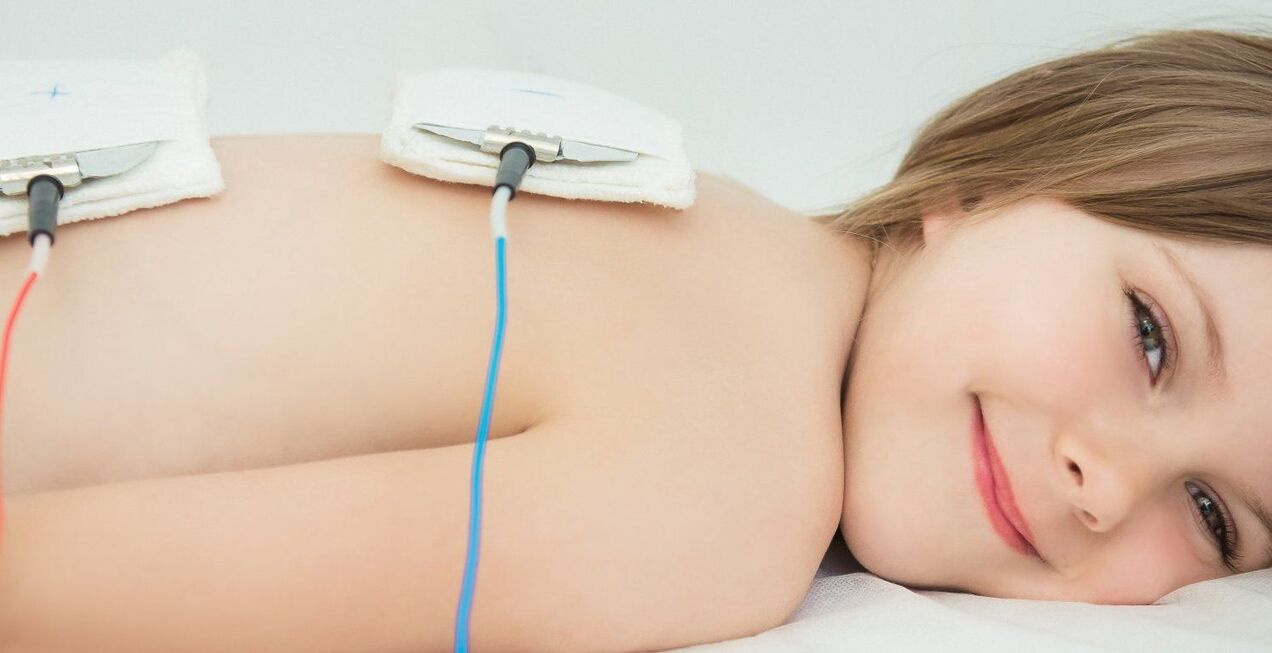
- Ultraviolet radiation. The pathological area is exposed to heat, which helps to improve blood supply, eliminate spasms and eliminate pain.
- Magnetotherapy, electrophoresis. Application of the method involves exposing the painful area of the spine to a magnetic/electric field. Through this effect it is possible to establish the body's metabolic processes, eliminate (totally/partially) inflammatory phenomena and accelerate recovery.
- Laser therapy. The condition of the affected spinal roots improves significantly due to the influence of helium-neon emitters on them.
- Balneotherapy. The main component used to carry out the physical procedure in question is therapeutic mud and mineral waters.
- Detensor therapy (mechanical stretching of the spine). Relevant for severe back pain.
Folk remedies for lumbar osteochondrosis
This method of treatment involves the use of ointments, rubs and compresses containing medicinal plants. These remedies help reduce inflammation and eliminate pain. It is advisable to use folk remedies in the treatment of lumbar osteochondrosis with caution: an allergic reaction may occur/develop.
Often, in the fight against the disease, rubbing and compresses are used:
- Red pepper tincture: for rubbing painful areas of the lower back. To prepare the medicine you need to mix 1 tbsp. vodka (diluted medical alcohol), 20-25 gr. dry ground red pepper. It is necessary to infuse (stirring occasionally) these ingredients for 5-7 days.
- Camphor and mustard: to rub daily before bed. To prepare the product, mix mustard powder (50 g), camphorated alcohol (50 ml), medical alcohol (90-100 ml), beaten egg white (3 pcs. ). After thorough mixing, you should get a liquid ointment.
- Honey and aloe vera: for compresses on the lower back (twice a day). To prepare this product, you need to use honey (100 ml), diluted medical alcohol (150 ml), aloe juice (50 ml). Before use, this mixture must stand for 10-12 hours.
- Horseradish root and alcohol: to rub the affected area of the back. To prepare this product, mix horseradish root juice and medical alcohol in equal proportions. After rubbing, wrap the treated area.
- Garlic juice and pork fat (1: 2): to rub into painful areas of the lower back.
- Peeled cabbage leaf with thick veins: for compresses. Before application, the cabbage leaf must be immersed in hot water (no more than 60 C). You can secure the sheet to your lower back using a bandage/gauze. After changing the color of the leaves, the procedure can be repeated.

Prevention of lumbar osteochondrosis
Prevention of the disease in question involves a whole series of measures.
Proper nutrition. The diet must be balanced and low in calories. It is not recommended to eat meals more than 6 times a day. Certain foods should predominate in your daily diet.
- Fish (sea).
- Vegetable fats (olive oil, linseed oil).
- Dairy products with a minimum content of dyes and sugar.
- Dishes containing gelatin (jelly meat, jelly).
- Animal cartilage (can be used to prepare first courses).
- Fresh fruits, vegetables.
- Vegetation.
- Mineral water.
It will be useful to take vitamin and mineral complexes (1-2 times a year).
Active lifestyle
- Swimming.
- Daily walks.
- Gym exercises (also recommended for pregnant women).
Performing simple physical exercises (15-20 minutes a day) aimed at strengthening the back muscles.
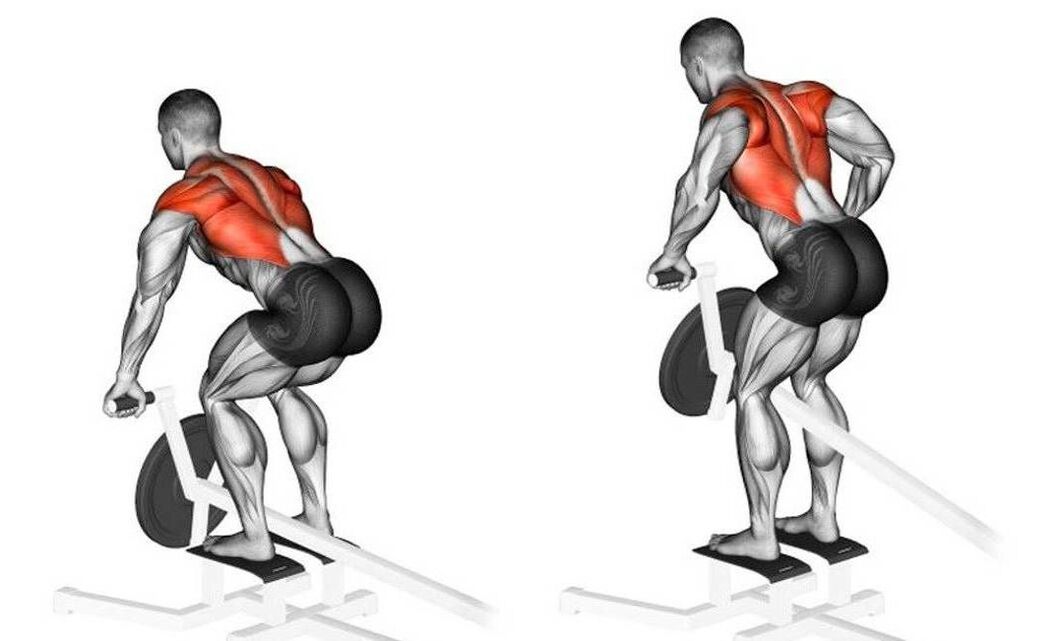
Lumbar osteochondrosis can go from the acute to the chronic stage, which means annual expenses for massages, analgesic injections and warming ointments. If you don't treat all of this, the consequences can be very sad, even paralysis or death!

























